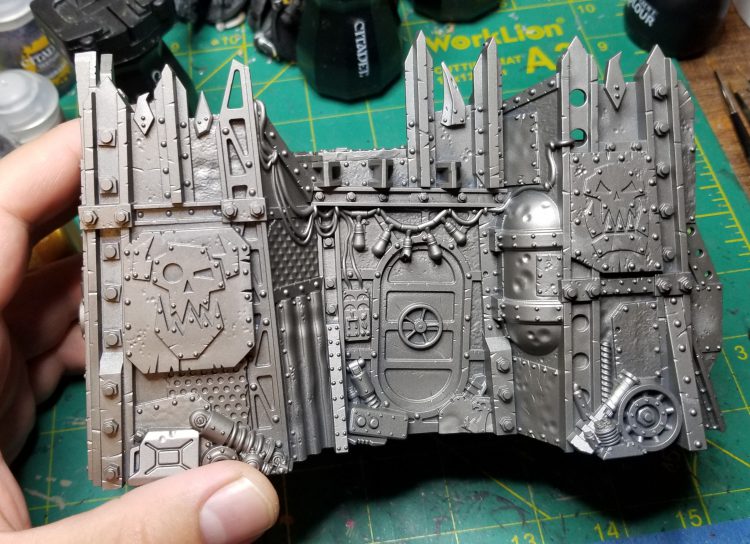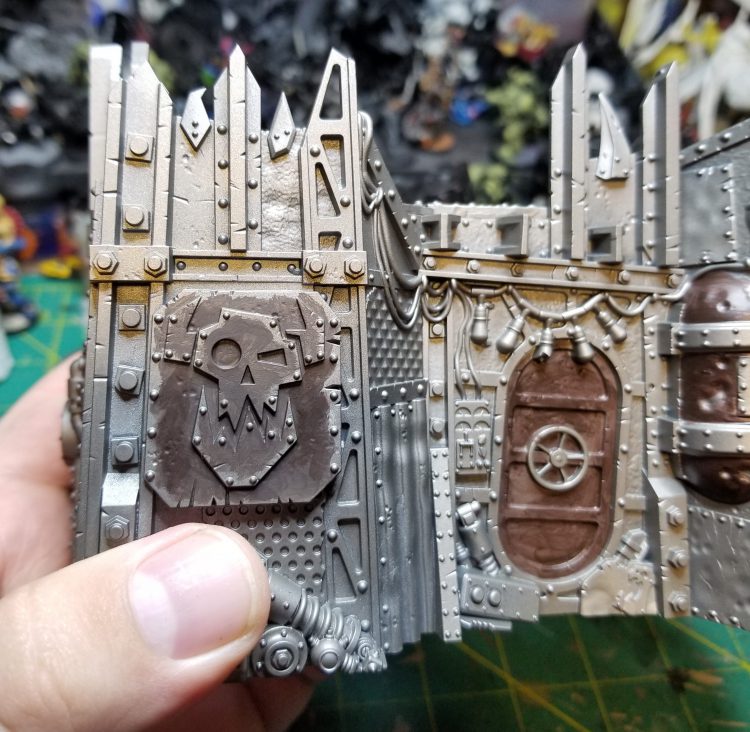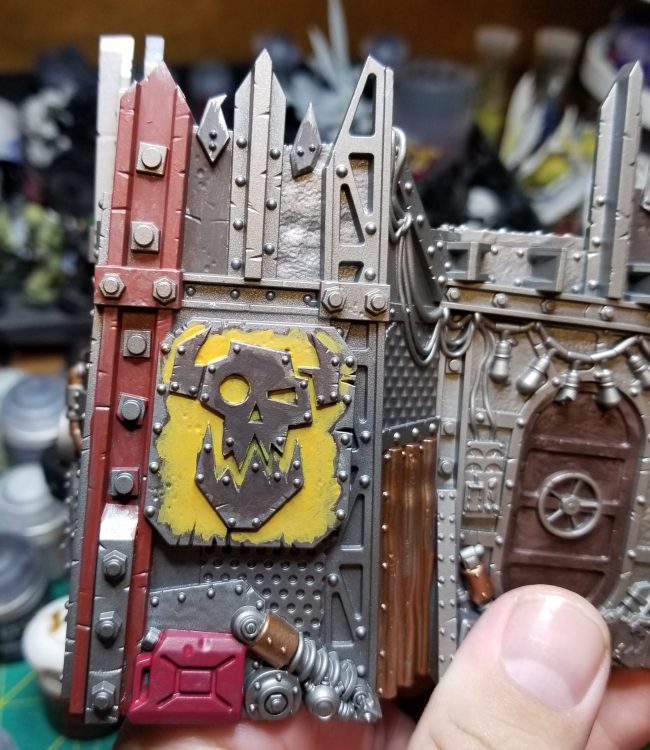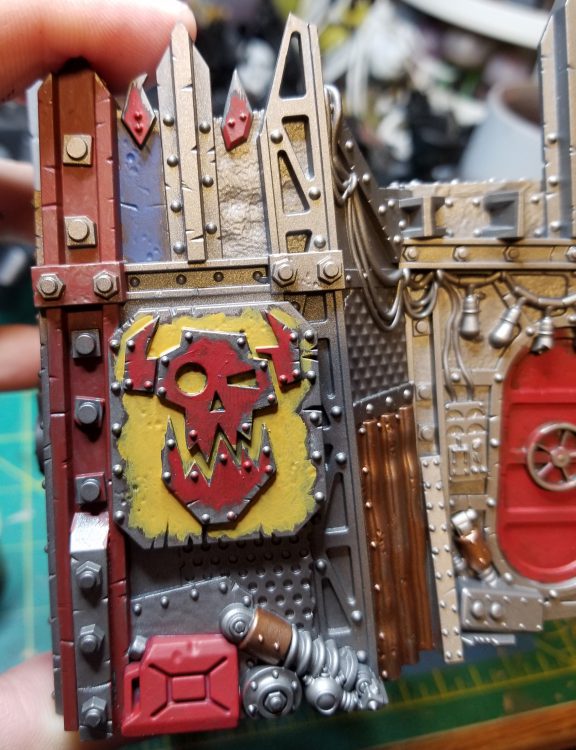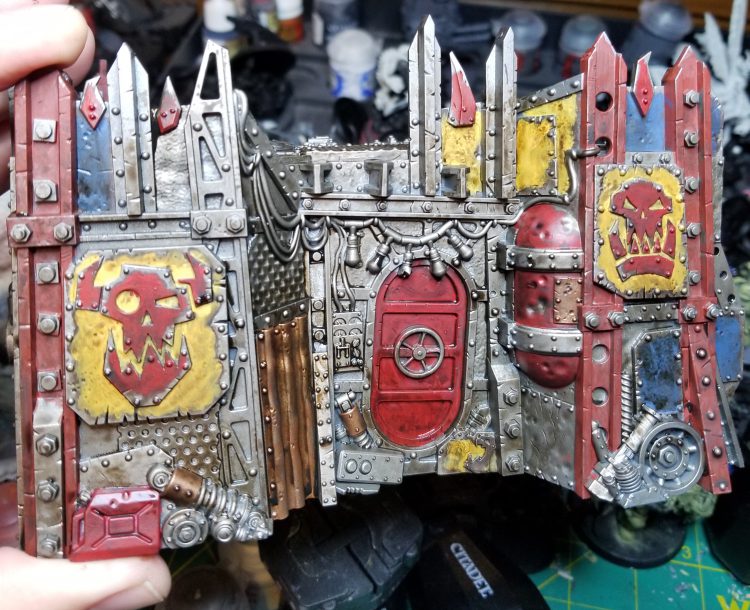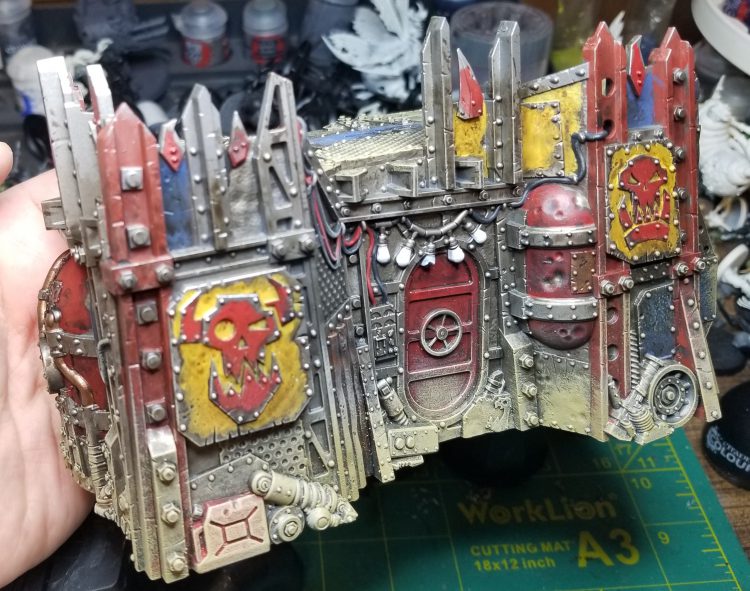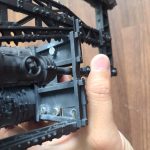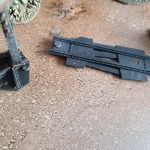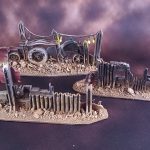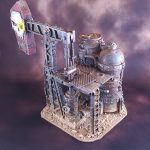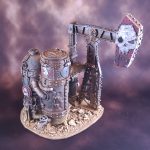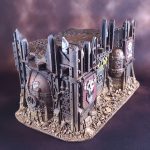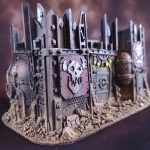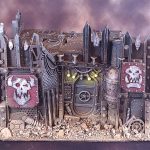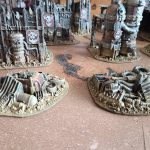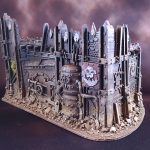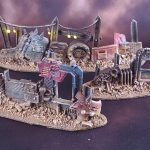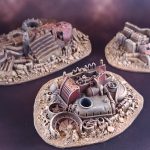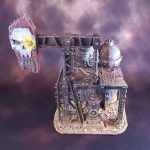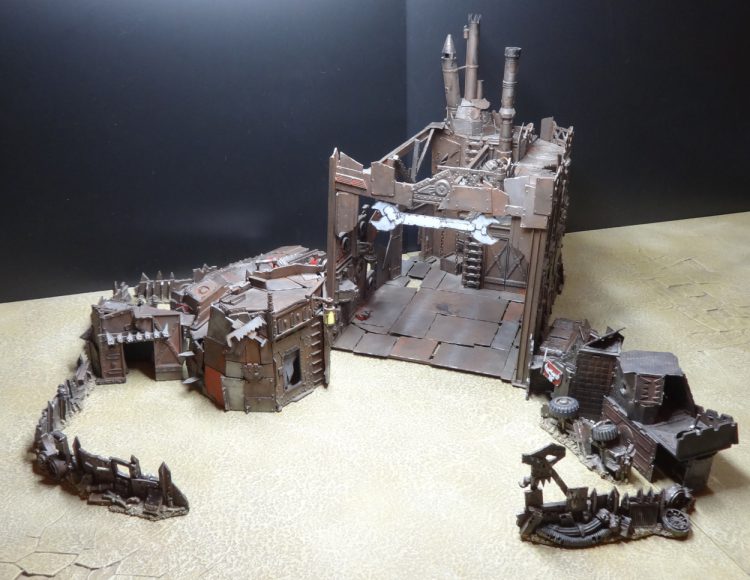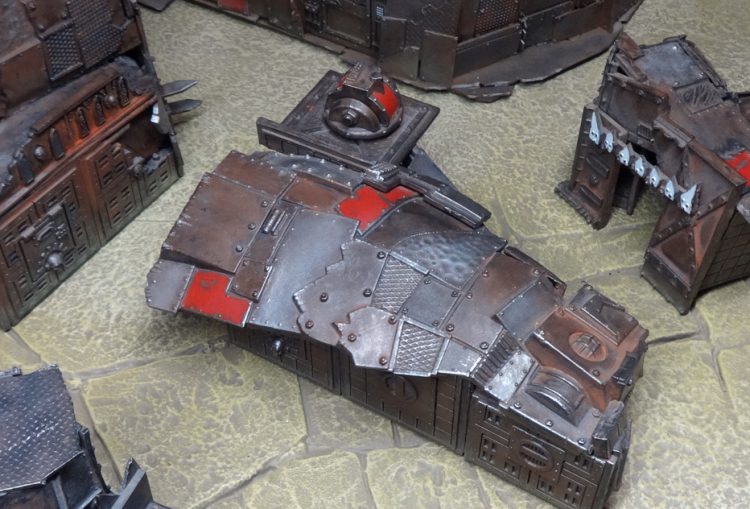The new Kill Team boxed set introduces us to the Octarius Killzone and the Ork settlements that spot its landscape, along with all new Ork terrain. These large heaps of scrap can be daunting to paint so if you’re looking at yours and wondering how you can create something that’s both visually interesting but easy to paint, we’ve got you covered. In this guide we’re talking about building and painting the new terrain, and techniques for painting Ork Terrain that will produce great results.
Robert “TheChirurgeon” Jones’ Method
The big thing I’m trying to do with most terrain – but particularly Ork terrain – is find the balance between something that looks great and stands out on the tabletop and isn’t going to take a long time or a lot of work to paint. Great terrain should act as a backdrop for minis and not be so busy that the models get lost, but at the same time you want enough color and detail that it looks like something you spent time on and gives the table a diorama appearance that makes people long to be playing at your house whenever they see your battle reports. What I tend to find is that a general strategy of wear and picking out some details goes a long way to accomplishing that.
Anyways I’m going to start by saving time, and that means priming these buildings with Leadbelcher spray. They’re all metal, so this is going to save me a ton of time.
Next comes time to pick out some details. I don’t know a ton yet about how I want to paint the terrain, but what I definitely want to do is create a chipped/peeling paint effect on most of the painted parts. The trick to doing that effectively is to give the give the illusion of a shadow between the paint and the exposed metal – this gives the impression that there’s a thick layer of paint that has worn or chipped off. You *can* do this with black, but it’s much more effective when you do it with brown, especially if you’re going to be painting blues, reds, and yellows like I am. I use Dryad Bark for the panels where I want to paint yellow and Blue and Rhinox Hide for the parts I’m painting mostly red. I don’t have to be super accurate at this point and it’s important that I leave the edges of the metal uncovered, since those are going to stay exposed.
Now I come back and add more color. This is where different shades of metal colors are going to help a lot, and differentiate the metal plates and panels making up the structure. I use Balthasar Gold for most of these panels and details but any silvers and bronzes will also work here. I want to give the thing some more color so I color the girders with Gal Vorbak Red, and take care to leave the tops showing leadbelcher – this is where wear has stripped the paint off the pointed tops.
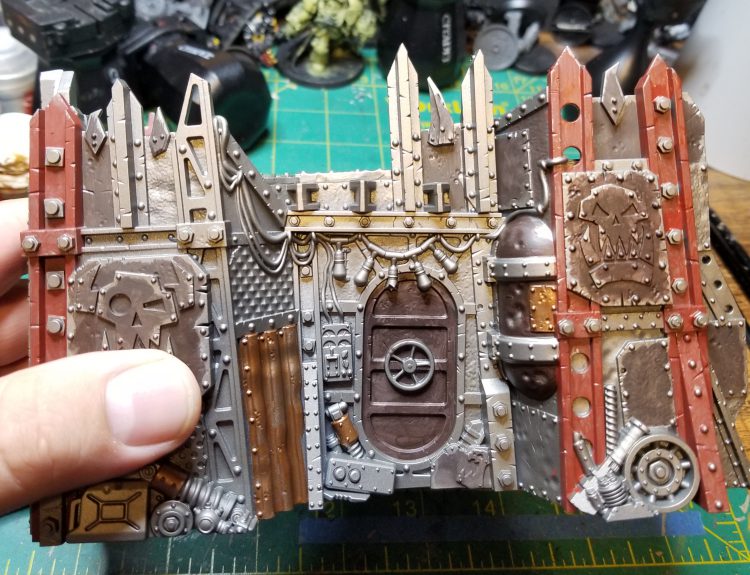 Now it’s time to start adding the chipping paint – I’m going to do this in layers. First I’m doing Averland Sunset over the backplate on this spot, but there are other places I’ll do different colors. I’m going to mostly cover the brown parts, but leave tiny lines of brown paint showing. Ideally I’ll do this more on the sides and bottom, to further give the illusion of depth.
Now it’s time to start adding the chipping paint – I’m going to do this in layers. First I’m doing Averland Sunset over the backplate on this spot, but there are other places I’ll do different colors. I’m going to mostly cover the brown parts, but leave tiny lines of brown paint showing. Ideally I’ll do this more on the sides and bottom, to further give the illusion of depth.
Next the red. Same strategy here, making sure to only cover the brown and leave the edges exposed. I use Mephiston Red and I’m doing this on the teeth as well, plus doing other plates with Altdorf Guard Blue.
Time to grunge this thing up. I need it to look gross, so I slather the thing in Agrax Earthshade, making sure to hit the copper parts harder. I need the whole thing to look absolutely filthy.
Next comes detail and touch-up work. I’m going ot re-hit the red paint spots with some more Mephiston Red and likewise the Yellow to spruce them up, and I’m going ot paint some of the wires – this will dramatically improve the visual appearance of the model by making it look like I’ve paid way more attention to the details on it. Same thing with the light bulbs, which I painted with Reaper Ghost White, but any super light off-white would do. I’m going for a dusty desert look, so now it’s time to drybrush some sand on. I didn’t have Zandri Dust on hand, so I used a pot of Armageddon Dunes for this, which also added some grit to the base that I liked a lot. I did some additional drybrushing with Karak Stone further up to give it a lighter look.
The end result is one I’m pretty happy with – it’s colorful and detailed without looking too uniform, and the whole thing took an hour or so, not counting time for things like waiting for the Agrax to dry. This is easy enough to replicate that I’ll do the rest of it this way, though I’ll probably vary up the colors on the signs and panels, since the red/yellow/blue aspect is the one thing I’m not super happy with.
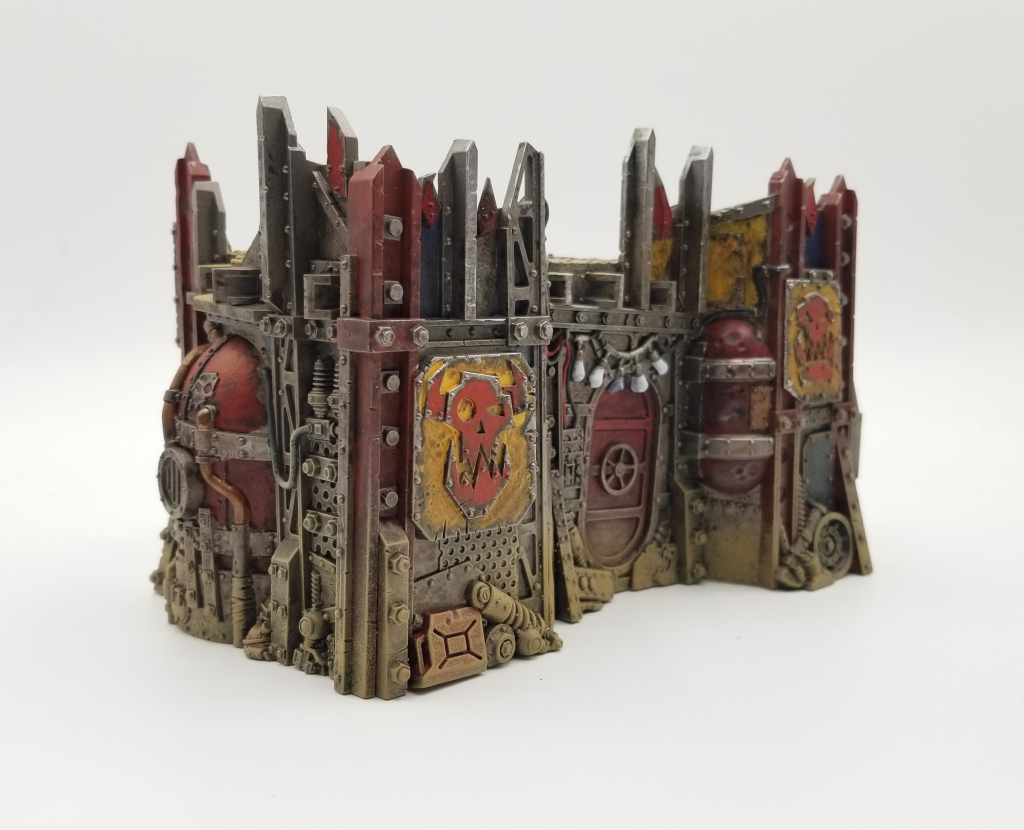
Crab-Stuffed Mushrooms’ Method
I was pretty excited about the new Kill Team terrain, so much so that I tore through it as soon I got my hands on it! I knew the secret to finishing would be speed: If a project takes too long, I get distracted by life and lose enthusiasm. All in all, this project took 3-4 days:
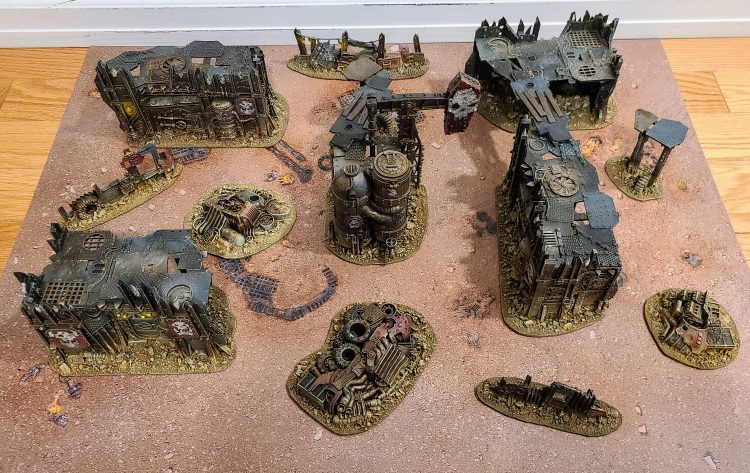
Basing the Terrain (Optional)
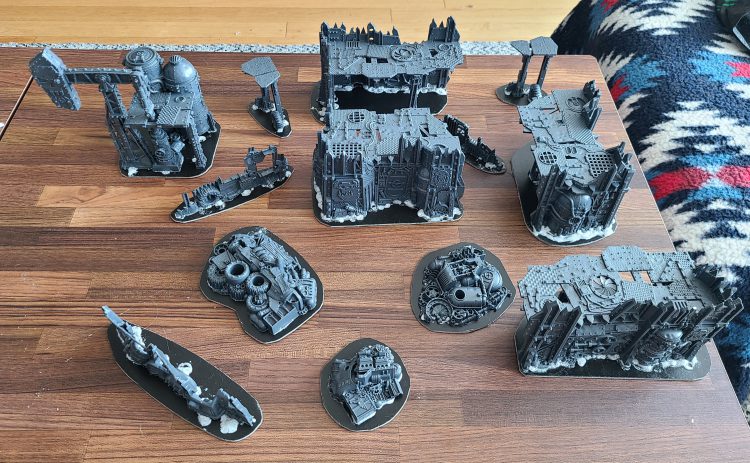
Basing Kill Team terrain is optional, but doing so can really add to the immersion. GW’s new plastic terrain is pretty sturdy, but adding bases can make the models easier to handle (particularly while painting them)! I was able to base these pretty easily using BuffaloChicken‘s tips from an earlier article on Goonhammer. I attached the terrain to the bases using Gorilla Glue, but this turned out to be overkill – you can see how the glue started to expand because I didn’t read directions on the bottle. In retrospect, mere PVA glue or a glue gun would have sufficed.
NOTE: When basing the corner buildings, I kept the outline of the bases small so that they could still be placed together into a larger building:
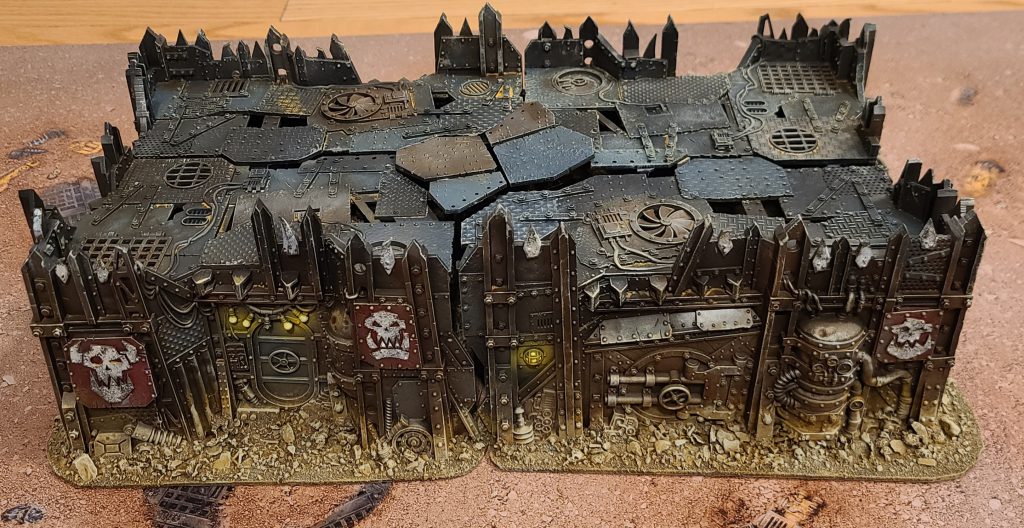
Flocking Terrain
I keep a large bucket of sand, gravel, pebbles and other detritus as flock for basing terrain. You can get a combination of materials from local hardware and pet stores. Throw it all in a container and save it for future projects.
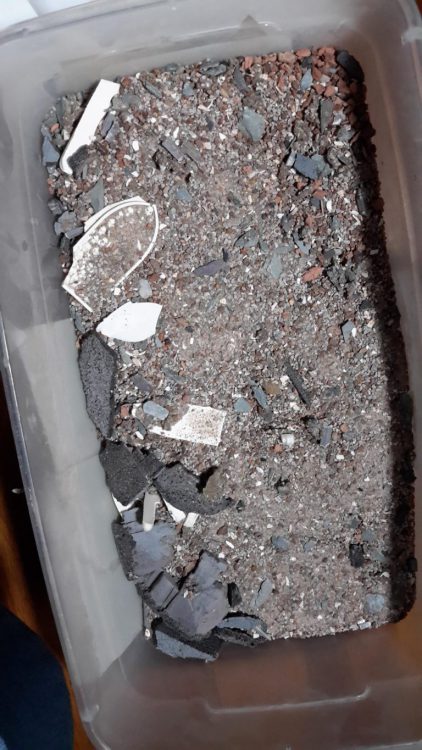
I based these with PVA (Elmer’s) glue. Keep the layer thin and gently tap the terrain to remove any excess. I did this over the container lid so I could recycle the excess flock for later. You may need to add a second layer based on coverage. Leave this to dry overnight before priming.
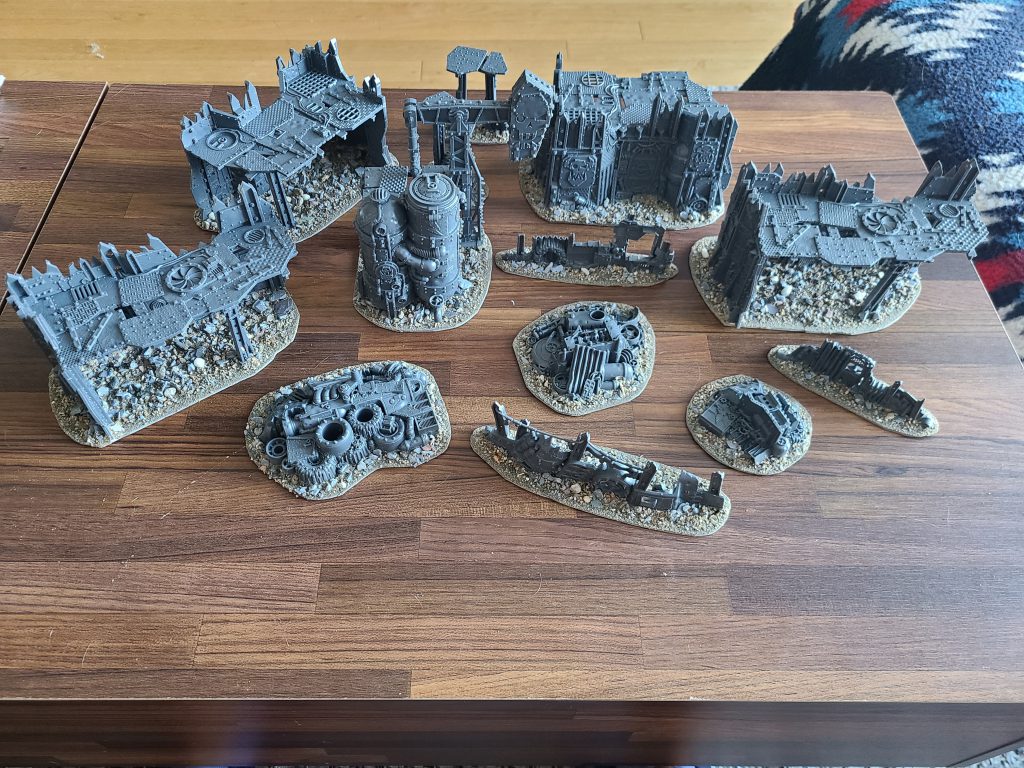
Magnetizing the Terrain (Optional):
To help anchor the bridges that came with the set, I added magnets to the underside of most of the buildings. Make sure you check the polarity and ensure the same side is facing up!
Painting Terrain (Draw An Owl):
As is tradition, I neglected to take photos during the most crucial part of the process: Painting the terrain! But bear with me, I’ll walk you through it:
- Prime the terrain: I primed these using GW’s Chaos Black spray – but you can also use auto primer. I recommend wearing gloves and doing this outside over a cardboard box and some newspaper. If you based the terrain, you’ll find it much easier to hold.
- First layers: I used an airbrush for this, but you can also use spray paint:
- To break up the black, I went over the original black undercoat with random patterns of dark brown (Dryad Bark) and dark grey (Mechanicus Standard Grey).
- Any dark grey or brown will do. Don’t try to be precise with this. Spray from a distance and avoid covering the black completely.
- If you’d like an example, GW author John French posted a similar tutorial for his Necromunda terrain, using tips from GW’s terrain guru, Mark Bedford.
- Painting the Metal:
- I didn’t want the terrain to be completely black, I painted random parts of the model (such as the girders, doors and armor plates) with Vallejo Burnt Iron.
- You can also use Leadbelcher or Iron Warriors paint from GW.
- Avoid being neat, drybrush or roughbrush the color. It’s okay if there’s spillover.
- The fuel canisters were base coated with Balthasar Gold.
- Spot Colors:
- To help break up the black and metal, I added red and dark blue spot colors to random parts of the model:
- Red armor plates were basecoated with Gal Vorbak Red, then roughly brushed with Mephiston Red.
- I also painted the glyphs (Ork symbols):
- The glyphs were basecoated with Steel Legion Drab, followed by a rough coat of Pallid Wych Flesh.
- To help break up the black and metal, I added red and dark blue spot colors to random parts of the model:
- Battle Damage:
- I applied weathering / battle damage using a similar method from a previous article: Applying a dark grey to the edges of terrain with a torn piece of sponge.
- In this case, I used Skavenblight Dinge, applied with a torn piece of blister pack foam.
- The Secret Sauce:
- The trick to bringing all of these colors together is a Pigment Wash and a light Drybrush of the entire model:
- All terrain pieces were given a wash of pigment powder mixed with water. I used a ratio of approx. 3 parts pigment to 1 part of water.
- I used Dark Yellow from Secret Weapons pigment line (sadly going out of business), but any light pigment powder should suffice.
- Let this dry overnight so the pigment has time to settle.
- Because we used water to apply the pigment wash, we can remove any excess pigment we don’t like with a wet brush.
- Once the pigment wash had dried, I applied a light drybrush of Ushabti Bone over the entire model.
- The trick to bringing all of these colors together is a Pigment Wash and a light Drybrush of the entire model:
- Painting the Bases
- The bases for each terrain piece were rough brushed with Mournfang Brown, followed by a heavy drybrush of Balor Brown, and a final drybrush of Ushabti Bone.
- You can be rough in your application (avoid neatness), but try to leave some of the previous layer showing by drybrushing less vigorously or covering a smaller area (such as against the base of the buildings):
- Object Source Lighting (OSL) / Painting the Lights
- I painted the light glow for the lamps with an airbrush of Averland Sunset, but you can get a similar effect by drybrushing Averland Sunset as well.
- I then painted the individual lights with a much brighter yellow, using Dorn Yellow.
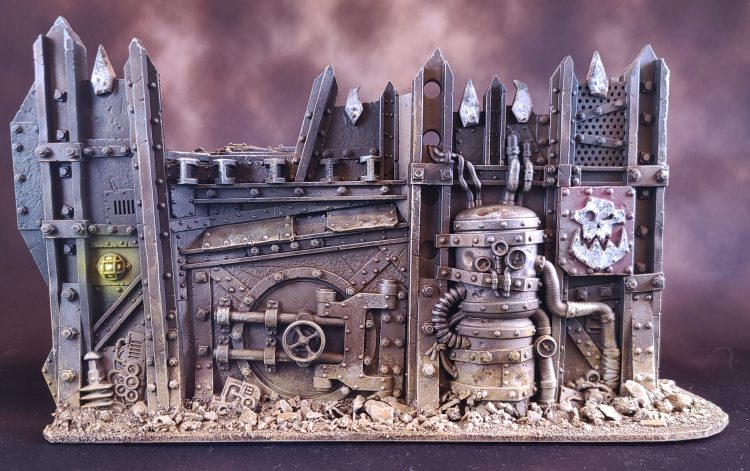
Terrain Gallery:
Rockfish’s Method
So when it came to painting Ork terrain I tried to do something nice and quick, at the time I had been experimenting with different ways of doing lazy metals so despite how much of it there will be I started with Vallejo grey primer.
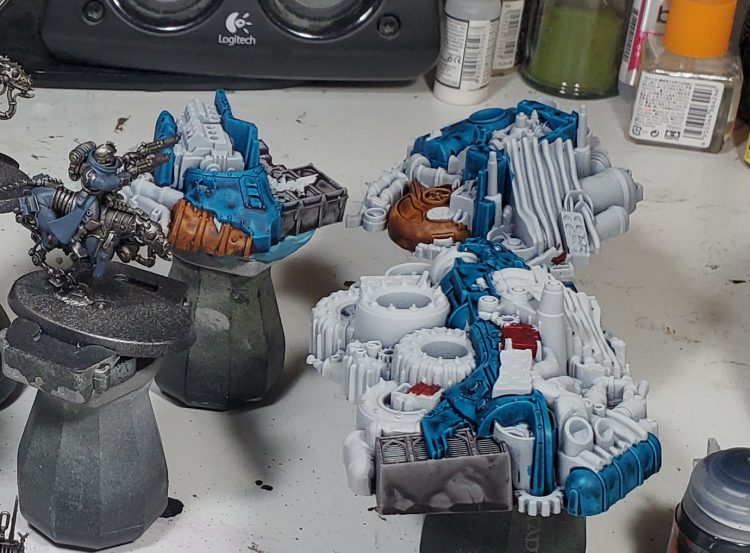
After that I picked out the non metals in Gore-grunta for the orange, Flesh Tearers for the red, Basilicanum for the grey and Akelian for the blue.

Next up everything that would be metal or black I hit with black templar, followed by drybrushing everything with wraithbone.
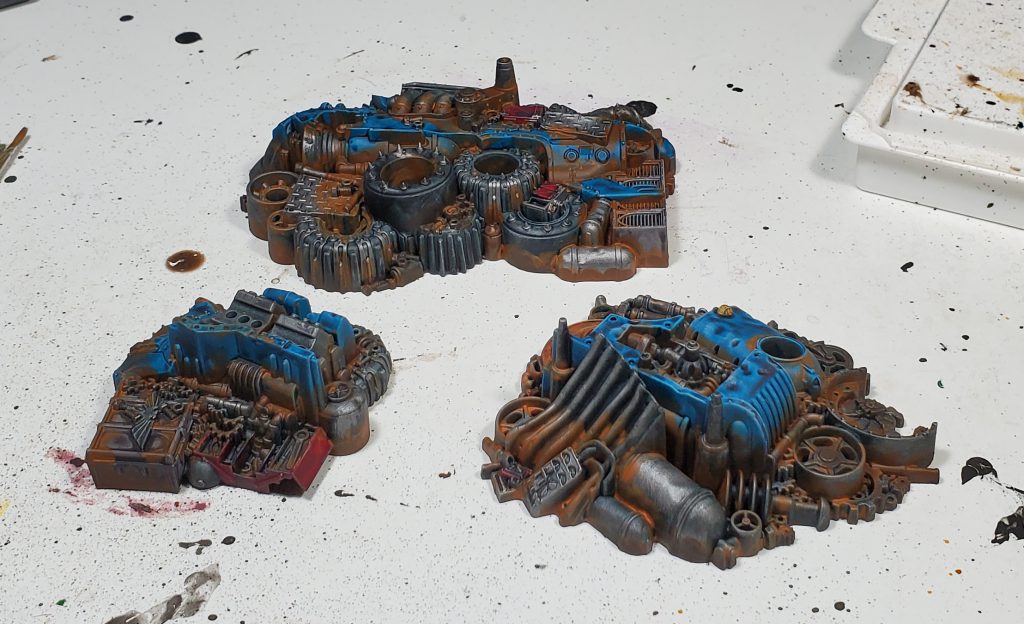
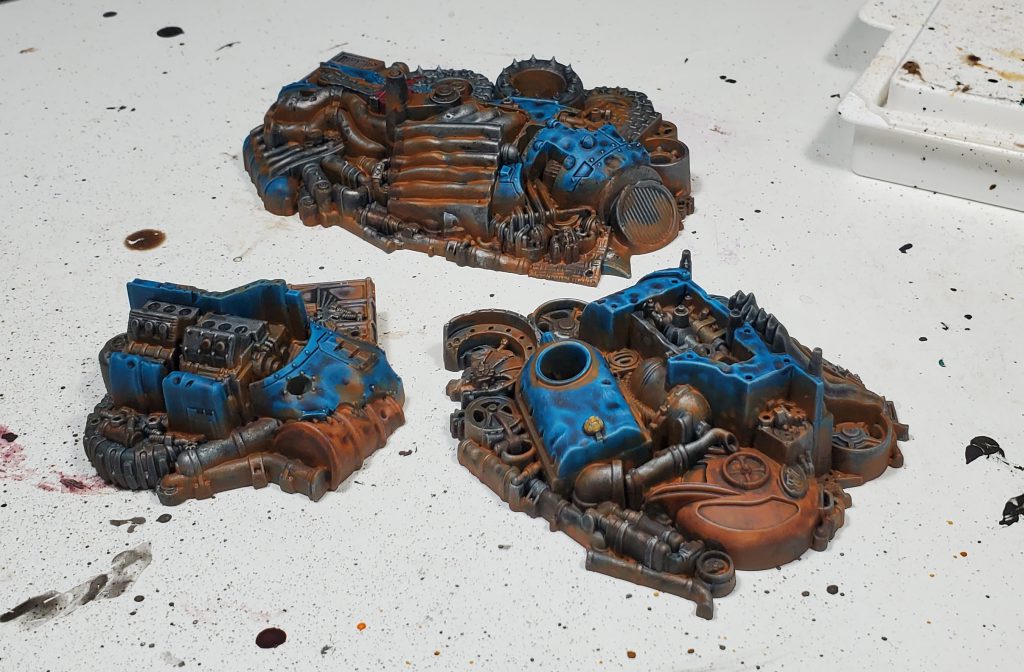
The metal was then done by taking a drybrush and way overloading it with leadbelcher and just going ham on the metal until all but the recess we covered to some degree. This results in a nice worn metal for not too much effort, after that I picked out a few lights with wraithbone + sepia. Then it was time to rust everything by slopping on super watered down Skrag brown to places where water would collect, to push the rust further I also applied some watered down mournfang to a few spots.
Charlie B’s Method
Historically, my approach to ork scenery is generally MAXIMUM SPEED with just enough tonal variation to not look turbo lazy. These shanties were lovingly bodged together about a decade ago and are still seeing regular service on the table; With the release of the new Kill Team box it seems like maybe the time has finally come for the shanty hamlet to expand to a shanty village. Hell yeah.

The method is simple: prime it black, and get a fat brush (seriously, even like a 2″ brush for painting your house). Next, get some brown paint. The exact shade doesn’t matter. These buildings were painted with the old Calthan Brown, which is pretty close to Citadel’s XV-88. If you want a darker look, Rhinox Hide would do. If you can get a trustworthy rattle can that does a nice shade of brown, even better, but I’m going to carry on assuming that you’ve just got some paint, a brush, and an enduring sense of optimism.
Now, and this next bit is very important: if you’re using the big brush then thin. your. paint. More than normal. A big honkin’ brush like this will fill all the surface detail if you aren’t careful. Test it on a small area first then adjust your paint consistency as needed before continuing.
You don’t need perfect coverage, but you’ll probably need a few layers. The advantage of a brush over an airbrush is that here, the slight inconsistency is actually desirable. Feel free to leave some black primer showing in the recesses. If you want an even grimier look, you can drybrush this stage instead.
Once the brown is dry, get some black wash and slap it over the whole thing. Personally I decided to save myself some money, since this didn’t need to look pretty, so instead watered down some black paint. Take heed: Citadel’s newer paints sometimes go weird and glossy when thinned right down, so consider buying some Army Painter matte black or some other brand. It’s also worth testing your homemade shade on an inconspicuous area and make sure it’s ok before applying it more widely.
Once the shade is dry, and this will take approximately three years, it’s time for detailing. Get out your Leadbelcher (or similar) and pick out random panels with a drybrush to create tonal variation, then do the same with a variety of bright oranges. With the orange, you actually want to rub it into recesses in spots where water would have gathered. I used a variety of oranges and even some orange pigment powders, but once again, the exact colours aren’t super important as long as you pick nice rusty shades.
With the various metal tones done, blotch some extra colours in to add interest. My army’s pure speed freaks, so I went with red. White’s also good for picking out icons, like the giant spanner and the dok’s signpost in the image below:
It’s worth noting how, just like Rob, I’ve tended to avoid the edges of the panels I’ve painted in red and white. This helps convey the notion that this was some battered piece of metal stolen from something else, and has the added advantage of you not having to do an extra stage. The take home lesson for me with ork scenery is that it’s an opportunity for you to be loose, sloppy, inconsistent, experimental, and to generally just have fun with it.
Beanith’s Methods
Super simple single step required here. Just keep using the same unpainted barricades in games against one of your mates until they crack and offer to paint them for you.
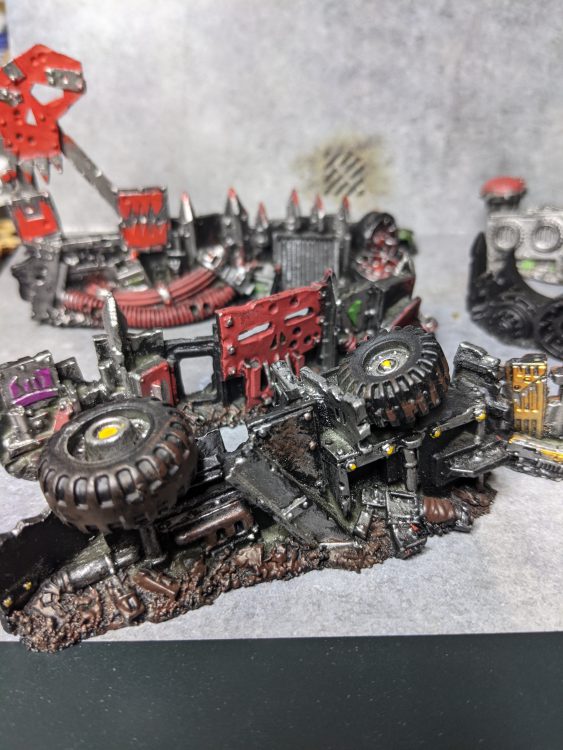
But if that doesn’t work for you (an Editor may be prodding me with the motivation stick right now) then here’s my super quick method for smashing out barricades and walls etc.
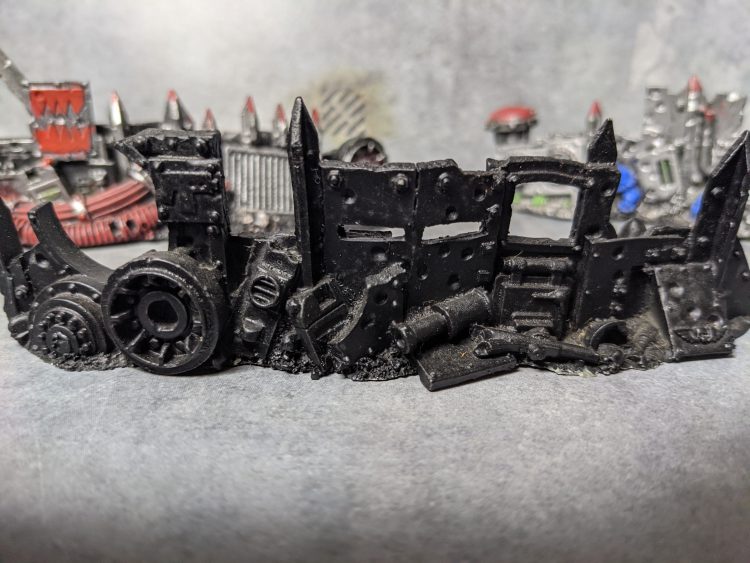
I’ll typically use a generic cheap black undercoat from the local hardware store. This one was primed black a few years ago so it’s a little dusty now so I will hit it with a stiff brush to knock off the dust before the next step

I’ve applied a thick coat of the Necron Compound using the dry brush method. I’m using a cheap big brush here so I’m keeping an eye out for loose bristles as I go.
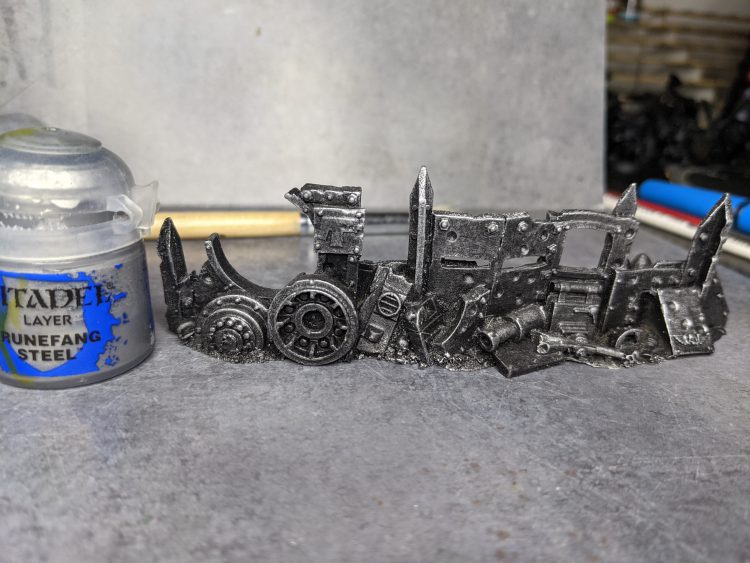
Dry brushing again with a brighter metallic, Runefang Steel in my case, focusing on hitting the edges of everything.

Here I’ve used Contrast paints and the awful Corax White to pick out a few spots of colour before going to town with Stirland Mud, you don’t need to be neat either with Mud as it gets everywhere in Real Life so you can use the excuse of “realism” here.
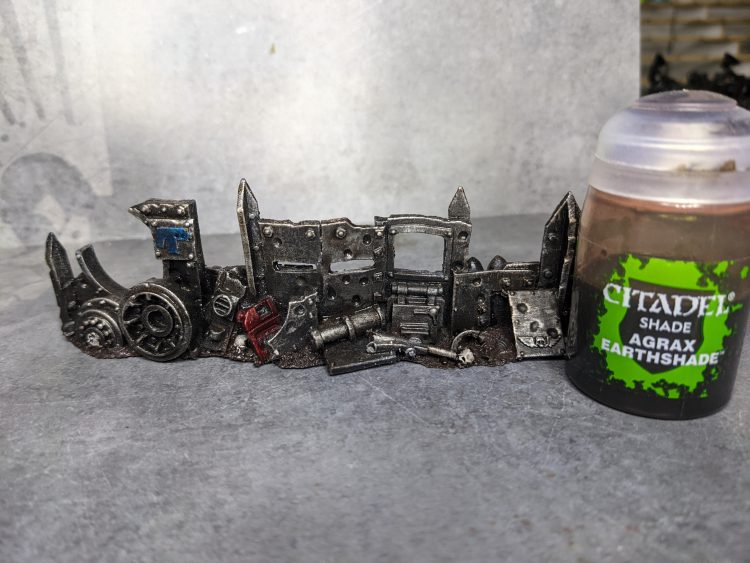
And finally I’ve hit the entire thing with Talent in a bottle Agrax Earthshade to make it look even dirtier and worn. Bish Bosh Bash, done son.
Wrapping Up
Well, that wraps up our look at painting Ork terrain. We hope you had as much fun reading it as we had making these buildings! As always, if you have any questions or feedback, drop us a note in the comments below or email us at contact@goonhammer.com.

